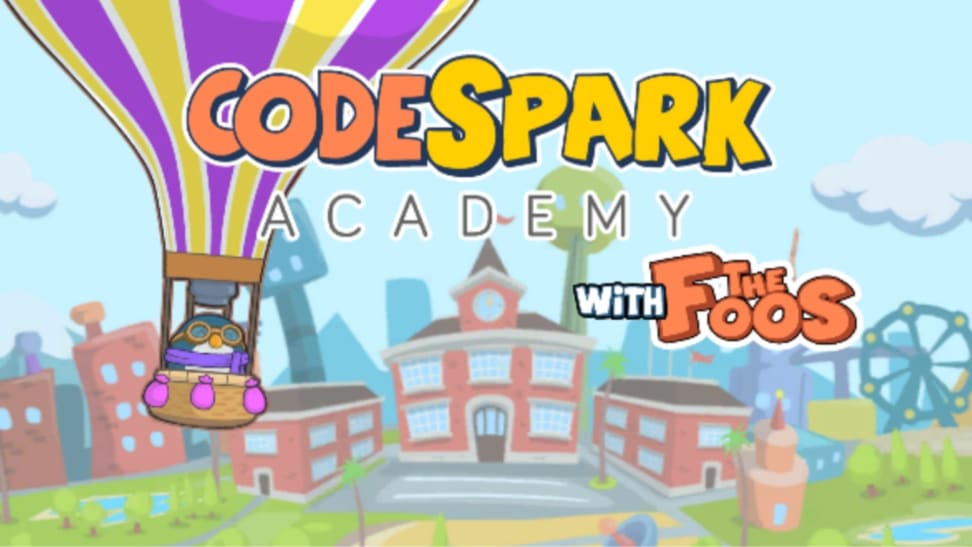 Credit:
CodeSpark Academy
Credit:
CodeSpark Academy
Products are chosen independently by our editors. Purchases made through our links may earn us a commission.
Want to get your kids coding? It can be harder than it looks. Our family has checked out countless video games and apps that profess to be fun while teaching kids the fundamentals of coding. In the end, most are either underwhelming in their concept and playability, or they feel a little too advanced for the 5- to 7-year-old age set.
When we signed up to test CodeSpark Academy through their seven-day free trial, I was happy to discover that there is a well-designed and well-thought-out early coding app out there. This app is made for kids ages 5 to 9; for the past three weeks our seven-year-old has been giving it rave reviews and asking to play with it constantly. To him, it it feels like an entertaining break, all the while it teaches advanced math concepts (like sequencing and order of operations) in such a way that even if coding is somehow replaced with some other arcade skill by the time he enters the workplace, he’ll still be building valuable math and logic skills to help him in myriad ways.
How does CodeSpark work?
Developed by a former Disney Imagineer, CodeSpark lends a fun and visually engaging approach to learning. It uses dozens of interactive activities including puzzles and games, as well as creative projects like mini-moviemaking and game design, to teach math and coding fundamentals. The programming concepts can get quite sophisticated, including variables and inequalities, stacks and queues, and Boolean logic, but the delivery of the lessons are fun and goofy and kids easily connect with them. Kids don't even realize they are learning and building important sequencing skills—which is the point, right?
This app runs easily across platforms. We were able to use it seamlessly it on our iOS phone, our Kindle Fire, and our Android tablet, as well as on their web-based platform. A family subscription is $7.99 a month, and it allows for accounts for up to three children and can be easily cancelled at any time.
CodeSpark Academy games
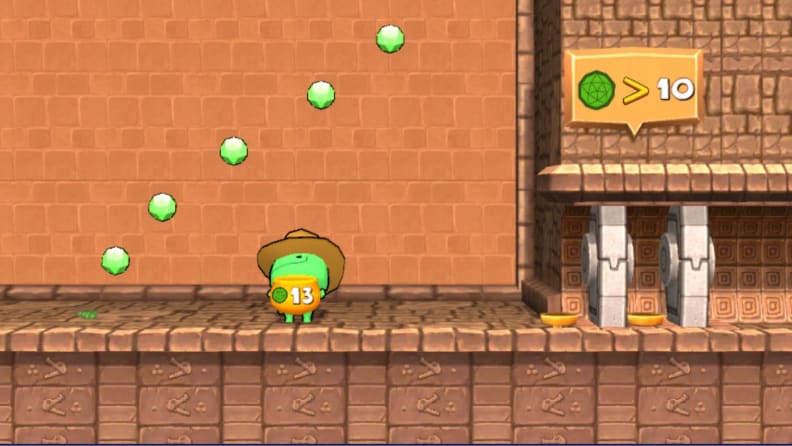
Kids learn math concepts like variables and inequalities while playing fun games.
The app is a pretty clever combination of puzzle learning and creativity platform. It uses colorful, silly characters, called the Foos, to engage kids and take them through a combination of creative exploration and sequential games and puzzles that focus on incremental skill-building.
The “puzzle” and “explore” games allow for kids to gradually build skills as they progress through sometimes silly and sometimes cool challenges. These challenges are done by way of drag-and-drop-style logic games. Lots of learning apps use this format, but the fun music and zany characters give this app more of an arcade feel that kids seem to respond to.
Through the app's “create” section, kids can also make short, animated videos with voice-overs and develop their own video games—the latter of which our 7-year-old has been particularly excited about during our testing. He has been chomping at the Minecraft bit for almost a year now, particularly over the idea of being able to create (and destroy) his own worlds. CodeSpark has been the age-appropriate salve we’ve needed as we tip-toe into the world of gaming.
How CodeSpark Academy deals with social media
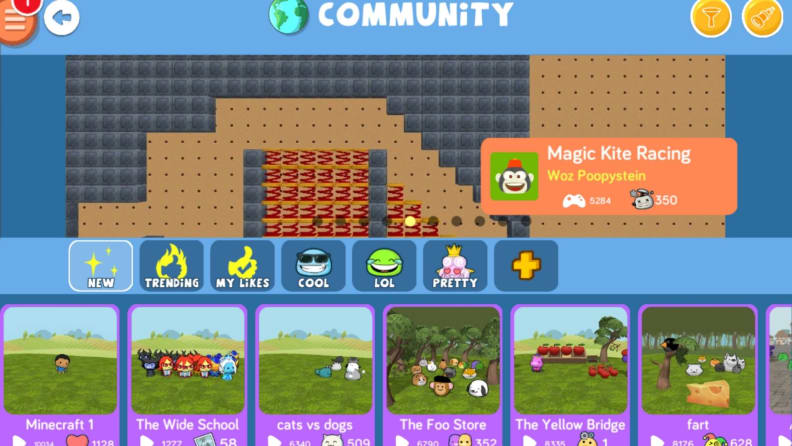
The "community" part of the app feels safe, allows for minimal interactions, and allows kids to remain anonymous.
CodeSpark also has a social media level element that I was skeptical of at first. To be quite honest, if I wasn’t testing this app as part of my job, I would have opted out of it. Upon trying it though, I was pleasantly surprised. No personal information of any kind is taken nor shared, and kids can’t really interact, they can only view and rate each other’s creations. It seems to serve more as an opportunity for gleaning creative inspiration than for actual social connection, which I like. If a kid likes a particular video, they can’t follow the creator, but they can “like” it and that saves it for them to look at again later.
CodeSpark characters go against stereotypes

The Foos allow for real gender equality, and even gender neutrality.
The Foos themselves are worth commenting on in that they are really pretty hilarious and are somehow appealing for kids ages 4 to 9 (the recommended age for CodeSpark is 5 to 9). They come with silly names and storylines that not only seem to give equal focus to male and female characters, but there are also quite a few characters that appear gender neutral.
There is nothing gendered about CodeSpark. It takes away the over-masculinization we sometimes see in boy-specific toys and games as well as any hint of frilly sparkle that is so often touted as “girl power.” We love that the Foos are just silly “beings” that kids can enjoy and possibly identify with based more on their temperament than gender specifics.
Accessibility for neurodiveristy
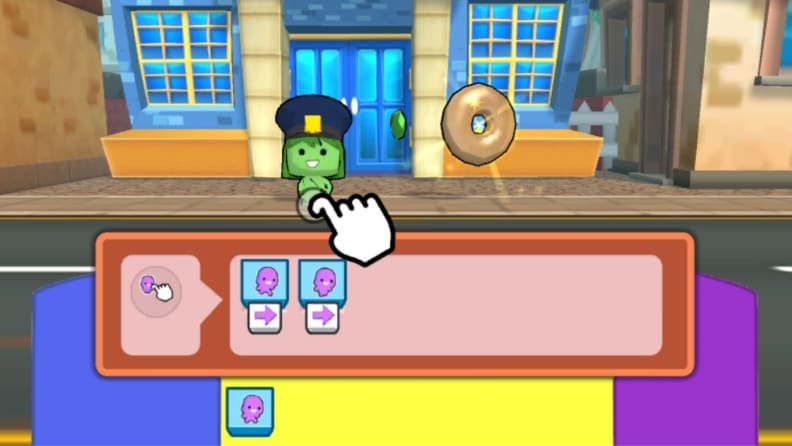
No words are used in the directions of codeSpark Academy, allowing accessibility for players.
CodeSpark operates without any words or directions, so no reading is required at any point in using the app. This can be both a good and a frustrating thing. The positive is that makes for a more accessible experience: It allows for pre-readers, non-English speakers, and children with learning differences like ADHD or dyslexia to play just as easily as their friends and classmates. The negative is that, while it does employ floating fingers and pointers to direct children, if kids hit a wall where they can’t intuitively take the next step, it results in frustration and disinterest. This happened a few times with my son. Knowing that he's the exact median age for this app, it seems likely this could cause frustration in younger users.
Is CodeSpark worth it?
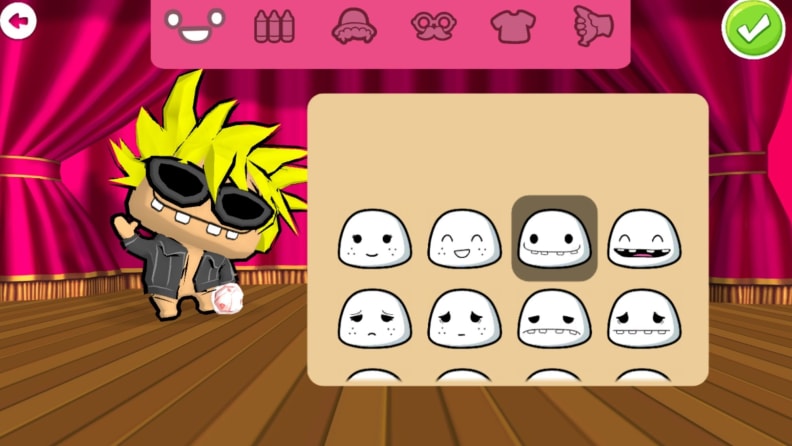
There's so much room for creativity. You can even make your own characters. Ours looks like Bobby Flay.
Yes. The most common complaint I read about CodeSpark is about the $7.99 monthly price tag. While that can add up, we think it’s worth it. There is no advertising to pause play and frustrate young users, and there are no micro-transactions that pop up unexpectedly to unlock additional areas. I find with so many “free” apps, my son stops using them the minute we hit a paywall. I don’t mind the $7.99 monthly fee because what you see is what you get. It’s also easy to cancel at any time.
There are lots of free apps out there that have similar components to CodeSpark, but they don’t really stand up. We are now two weeks past our free trial and my son is still asking to play daily. He’s also choosing CodeSpark over other video games that we felt were maybe a year or two too advanced for him (I’m looking at you, Minecraft).
The design and functionality of this game allows for actual quiet time for parents. Most other coding and math apps are either boring after a few plays, not visually appealing enough, too simplistic, or I need to constantly check in to help my son progress. With CodeSpark he just plugs in and I don’t have to worry. To me, that’s priceless.


